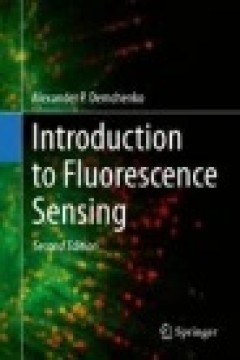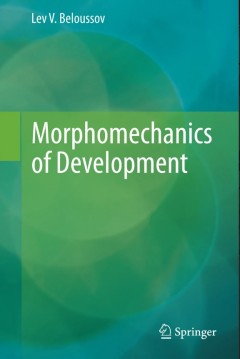Filter by

Agricultural Implications of Fukushima Nuclear Accident (IV)
This open access book presents the findings from on-site research into radioactive cesium contamination in various agricultural systems affected by the Fukushima Daiichi Nuclear Power Plant accident in March 2011. This fourth volume in the series reports on studies undertaken at contaminated sites such as farmland and forests, focusing on soil, water, mountain, agricultural products, and animal…
- Edition
- 1
- ISBN/ISSN
- 978-981-19-9361-9
- Collation
- XIII, 276
- Series Title
- -
- Call Number
- -

Kinetics of Enzyme-Modifier Interactions: Selected Topics in the Theory and D…
The kinetic mechanisms by which enzymes interact with inhibitors and activators, collectively called modifiers, are scrutinized and ranked taxonomically into autonomous species in a way similar to that used in the biological classification of plants and animals. The systematization of the mechanisms is based on two fundamental characters: the allosteric linkage between substrate and modifier an…
- Edition
- -
- ISBN/ISSN
- 978-3-7091-1402-5
- Collation
- -
- Series Title
- -
- Call Number
- -

Introduction to Fluorescence Sensing
Fluorescence is the most popular technique in chemical and biological sensing and this book provides systematic knowledge of basic principles in the design of fluorescence sensing and imaging techniques together with critical analysis of recent developments. Its ultimate sensitivity, high temporal and spatial resolution and versatility enables high resolution imaging within living cells. It dev…
- Edition
- -
- ISBN/ISSN
- 978-3-319-20780-3
- Collation
- -
- Series Title
- -
- Call Number
- -

Introduction to Biosensors: From Electric Circuits to Immunosensors
This book equips students with a thorough understanding of various types of sensors and biosensors that can be used for chemical, biological, and biomedical applications, including but not limited to temperature sensors, strain sensor, light sensors, spectrophotometric sensors, pulse oximeter, optical fiber probes, fluorescence sensors, pH sensor, ion-selective electrodes, piezoelectric sensors…
- Edition
- -
- ISBN/ISSN
- 978-3-319-27413-3
- Collation
- -
- Series Title
- -
- Call Number
- -

Nanotechnology to Aid Chemical and Biological Defense
This book presents research into chemical, biological, radiological and nuclear (CBRN) defense and environmental security, exploring practical implications of the research. Contributions from a diverse group of international civilian researchers present the latest work on nanotechnology problems in this area, looking at detection, protective technologies, decontamination and threats to environm…
- Edition
- 1
- ISBN/ISSN
- 978-94-017-7217-4
- Collation
- XIV, 221
- Series Title
- NATO Science for Peace and Security Series A: Chemistry and Biology
- Call Number
- -

Nanopackaging: From Nanomaterials to the Atomic Scale
This book is a first attempt to merge two different communities: scientists and technologists. Therefore, it is not a general overview covering all the fields of nanopackaging, but is mainly focused on two topics. The first topic deals with atomic scale devices or circuit requirements, as well as related recent technological developments; for example, surface science engineering and atomic scal…
- Edition
- 1
- ISBN/ISSN
- 2193-9691
- Collation
- VIII, 189
- Series Title
- Advances in Atom and Single Molecule Machines
- Call Number
- -

Nano/Micro Science and Technology in Biorheolog
Integrating basic to applied science and technology in medicine, pharmaceutics, molecular biology, biomedical engineering, biophysics and irreversible thermodynamics, this book covers cutting-edge research of the structure and function of biomaterials at a molecular level. In addition, it examines for the first time studies performed at the nano- and micro scale. With innovative technologies an…
- Edition
- 1
- ISBN/ISSN
- 978-4-431-56159-0
- Collation
- VIII, 443
- Series Title
- -
- Call Number
- -

Morphomechanics of Development
This book outlines a unified theory of embryonic development, assuming morphogenesis to be a multi-level process including self-organizing steps while also obeying general laws. It is shown how molecular mechanisms generate mechanical forces, which in the long run lead to morphological changes. Questions such as how stress-mediated feedback acts at the cellular and supra-cellular levels and ho…
- Edition
- 1
- ISBN/ISSN
- 978-3-319-35365-4
- Collation
- -
- Series Title
- -
- Call Number
- -
 Computer Science, Information & General Works
Computer Science, Information & General Works  Philosophy & Psychology
Philosophy & Psychology  Religion
Religion  Social Sciences
Social Sciences  Language
Language  Pure Science
Pure Science  Applied Sciences
Applied Sciences  Art & Recreation
Art & Recreation  Literature
Literature  History & Geography
History & Geography